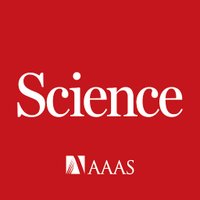
Gilles Louppe
@glouppe
On a quest to accelerate Science with #AI. Professor of AI and deep learning @UniversiteLiege. Previously @CERN, @nyuniversity.
ID: 72030668
http://glouppe.github.io 06-09-2009 13:08:37
5,5K Tweet
8,8K Followers
2,2K Following

.Bruce Denby is the author of the very first paper on AI and Particle Physics back in 1988, when he was a post-doc in Orsay ( IJCLab @cnrs_in2p3) working in the CERN LEP DELPHI experiment. He was almost fired for this! #HEPML Tommaso Dorigo Kyle Cranmer Gregor Kasieczka




Scikit-Learn just crossed 100000 citations! I am no longer part of the core team, but I am proud to have been part of the project since the beginning. A big thank you to all maintainers, contributors, and users for their continuous vision, support and help! 👏 scikit-learn




This has been such a long time coming… amazing to see this out - Aishik Ghosh led this effort throuout and persevered through this. It also proves that a big ship like ATLAS Experiment can move if you push long enough

A milestone! 10 years ago I had an epiphany about using machine learning to approximate likelihood ratios, enabling statistical inference when your model is a complex simulator. Since then ~1000 papers on SBI have been published, but this is the 1st from the ATLAS Experiment 🧵



"Make sure that your model can overfit on small training set" might be the single best sanity check when building ML models. It helped me solve countless implementation errors and to better understand capacity. I first heart it from François Chollet, thanks!

Excited to share the first results using Neural Simulation-Based Inference (NSBI) techniques applied to ATLAS Experiment data! We measure the elusive off-shell Higgs boson with 3.1x better observation sensitivity than standard (histogram) analysis techniques! A thread: (1/N)



This new framework will extend the vision of the original "Madminer" papers by Kyle Cranmer , Johann Brehmer, Gilles Louppe and others to the LHC use case, potentially enabling wide-scale applications - accelerating discovery potential of the LHC (N/N)


Aishik Ghosh is amazing. On top of the latest state of the art in AI/ML and with the tenacity and fearlessness to push this through large particle physics collaboration to get to the real physics impact of some exciting new methods.




